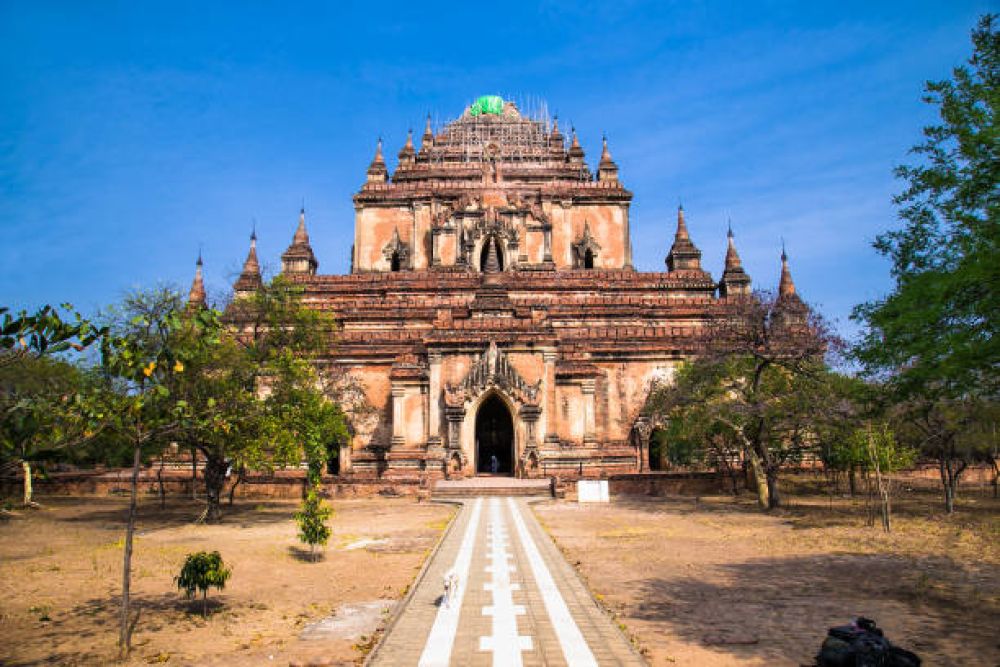

The ancient city of Bagan in Myanmar is known for its thousand-year-old temples that stretch across the horizon. Among the myriad of sacred structures, the Sulamani Temple holds a special place in the history of Burmese architecture and tourism. Built in 1183 by King Narapatisithu, the temple is a testament to the architectural finesse of the Pagan Empire.
The Sulamani Temple is often referred to as the "Crowning Jewel" and has been a significant pilgrimage site since its inception. It represents some of the highest standards of Bagan craftsmanship and is an embodiment of the sophisticated Burmese temple design that developed over centuries of temple-building in the region.
The temple is adorned with intricate frescoes, glazed tiles, and impressive stucco carvings that demonstrate the matured art and culture of the time. This temple’s artistic treasures have been a magnet for tourists and scholars alike, who often pour over the narrative murals depicting scenes from the Jataka tales and various Buddhist myths.
Tourism in Bagan, and at the Sulamani Temple specifically, started to gain more international attention during the late 20th century. Restrictions began to ease, and Myanmar's government, recognizing the potential of tourism, started to promote Bagan as a cultural heritage destination. The Sulamani Temple, as a premier example of Bagan’s historical sites, has always been at the forefront of these promotion efforts.
Since it survived several earthquakes over the centuries, including the destructive 1975 quake, restoration efforts have allowed the Sulamani Temple to become a symbol of endurance and preservation. These efforts have played a critical part in the enduring popularity of the temple amongst tourists.
Modern tourism to the Sulamani Temple has been influenced by the increasing desire for sustainable and responsible travel. Visitors are not only interested in the temple's rich history but also in ensuring their impact on the local environment and communities is positive.
Additionally, experiential travel has taken root, with more tourists looking to understand the culture and traditions of Myanmar during their visit. Interactive tours with local guides and visits to surrounding villages have become an essential part of the Sulamani Temple experience.
Innovations such as hot air balloon rides offer an unprecedented view of the temple amid the Bagan plain, reflecting the demand for unique perspectives on historical sites and the integration of adventure tourism with cultural experiences.
The Sulamani Temple's history, artistry, and spiritual significance continue to attract visitors from around the world. Deeply embedded in the fabric of Myanmar's history, the temple is not only a sacred site but also a beacon of the tourism appeal that Bagan holds. It remains one of the most revered and must-visit destinations in Myanmar, offering a vivid window into the region's past and its evolving tourism industry.